The Early Schools of Indian Buddhism Series
The Early Schools of Indian Buddhism Series
How the Theravada school dealt with doctrinal points from other schools
The Katha-vatthu — Chapter 3 — Part 12
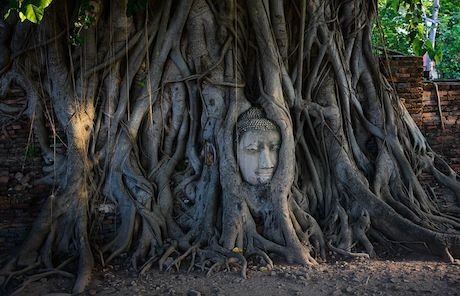
In Part 8 of this series, we looked at the schools that ‘participated’ and ‘did not participate’ in the Third Council of Buddhism, according to the Kathavatthu, the text that deals with the ‘points of controversy’ from schools other than Theravada. As was mentioned in Part 8, the Kathavatthu is classified as a canonical text in the Theravada tradition, as being part of the Abhidhamma Pitaka, although the text has been expanded up until the second century AD, as evidenced by the ‘late’ schools that are mentioned in the text. Likely, the text started out small and was expanded as more controversial viewpoints from other schools were encountered and dealt with as such.
The Kathavatthu includes a total of 217 points of controversy, divided into twenty-three chapters, where each point is associated with one or more schools, although a few are not assigned to any particular school at all. Due to the vast amount of doctrinal points covered, I have divided this Part 12 of the series into seven chapters, with each chapter covering one or more of the schools and their doctrinal points of ‘controversy.’
Point 35 — VIII. 1. Of Types of Destinies
That there are six spheres of destiny.
There is an opinion among some schools —the Andhakas and Uttarapathakas—that the Asuras form the sixth plane of rebirth. The Theravadin contradicts this in virtue of the hair-raising illustration of the five divisions of destiny in the Sutta: ‘There are these five destinies, Sariputta.’ (MN i.73) . . . It is true that a troop of Asuras—that of Vepacitti (SN i.221)—was freed from the fourfold plane of misery, but not to form a separate plane. They were taken up among the devas. The Kalakanjakas were taken up among the Petas.
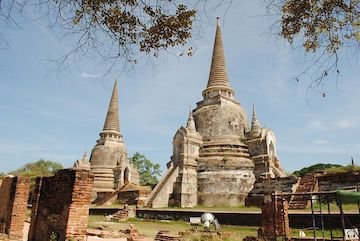
Point 36 — VIII. 5. Of the Rupa-Element (Form-Element)
That the ultimate ‘datum or element of rupa’ is things (cognized as) material.
The Theravadin criticizes this view—held, for instance, by the Andhakas—on the ground that the ‘Rupa-element’ includes all the spheres of life known as Rupa-bhava (form-being), and is, therefore, more extensive than just material qualities of things.
Point 37 — VIII. 7. Of the Senses in the Rupa-Sphere (Form-Sphere)
That in the Rupa-sphere (includes sixteen grades of devas) the individual has all the six senses.
Some (as, for instance, the Andhakas and Sammitiyas), judging by the Sutta-passage—‘having form, made of mind, with all its primary and lesser parts complete, not deficient in any organ’—imagine that the Brahma-group and the rest had sensations of smell, taste, and touch.
Point 38 — VIII. 8. Of Matter in the Arupa-Sphere (Formless-Sphere)
That there is matter among the Immaterial-sphere.
Some (as, for instance, the Andhakas), judging by the text—‘Because of consciousness there comes to mind and body’ (SN ii.1)—imagined that, even in the Arupa-sphere of existence, there was a subtle, refined matter segregated from grosser matter.
Point 39 — IX. 1. Of Release through Seeing the Good (anisamsa: meritorious, commendable)
That the Fetters are put off for one who discerns a blessing (in store).
From, the Commentary.—In our doctrine, we are convinced that when anyone discerns (a) the ‘world’ (literally, ‘the conditioned’) as full of peril, and (b) Nibbana as a blessing, the ‘Fetters’ are put off. However, some—for instance, the Andhakas—take one of these two alternative statements, and say it is only by the latter discernment that the Fetters are put off. It is to rebuke this partial view that the Theravadin speaks.
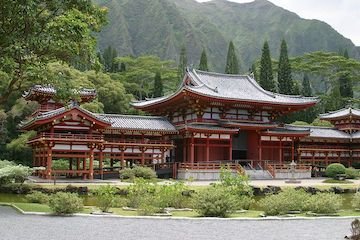
Point 40 — IX. 4. Of Bias as without Mental Object
That latent (immoral) bias (anusaya) is without mental object.
Some—for instance, the Andhakas and certain of the Uttarapathakas—hold that what is called the (seven) potential biases, being something distinct from mind, unconditioned, indeterminate, are thereby without a concomitant mental object. The Theravadin’s questions are to show what sort of phenomenon it is that ‘has no mental object.’
Point 41 — IX. 5. Of Insight as without Mental Object
That insight (nanam) is without mental object.
Since an Arahant cannot be said to lack insight, that insight must, at least at times, be practical without an object, namely, when his visual consciousness is active, for then he is occupied with the visible object engaging his sense of sight. So think some, for instance, the Andhakas.
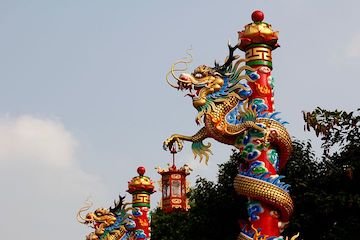
Point 42 — IX. 12. Of Past, Future and Present
That a past or future experience is actually possessed.
In this connection we must distinguish between actual and potential possession. (the notion of being in possession of samannagata, and that of having acquired: patilabha) The former is of the present moment. However, for a man who has acquired the Eight Attainments in Jhana, the possession of them is potentially persistent, though not of all at once. However, some, not discerning this distinction—for instance, the Andhakas—speak of past and future Jhanas as something actually and presently possessed.
Point 43 — X. 1. Of Cessation
That before five aggregates seeking rebirth have ceased, five operatives (kiriya: that which induces action, such as bodily movement, etc.) aggregates arise.
Some—for instance, the Andhakas—hold that if, before a unit of sub-consciousness lapses, another unit of consciousness, with its (operative) four-fold aggregate and the material aggregate sprung from it, has not arisen, the living continuum must be cut off.
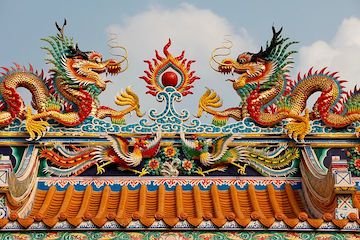
Point 44 — XI. 4. Of the Utterance: ‘This is Pain and Sorrow!’
That from an utterance of the word, ‘This is suffering!’ insight into the nature of suffering is set working.
Some, like, the Andhakas, hold that this occurs when the devotee at the moment when he enters on the Path. (When he is fleeing from suffering rather than envisaging positive happiness) The opponent’s reply admits both utterance and insight. In the last question, to which the opponent replies in the negative, he is asked whether, by the procedure he upholds, he is not committed to allowing an insight issuing from each syllable: I-dam du-kham?
Point 45 — XI. 7. Of the Causality of Things (Dhammatthitata: the state of being a cause by which resulting things are established)
That a cause of things is predetermined. (parinipphanna)
Some, like the Andhakas, hold that because of the Word—‘There is a cause, and that is elemental’ (SN ii.25; AN i.286)—each term in the chain of Causal Origination is, as a cause, elemental, and is therefore predetermined. The Theravadin shows that, if it were predetermined by another cause, this cause would, in turn, be predetermined by yet another, and so on ad infinitum.
About SN ii.25; AN i.286: In these passages it is stated that, whether Tathagatas arise to point it out or not, always the natural order holds good that (1) causation in the physical and psychical world goes on; (2) all things are impermanent, are induced with suffering, are not self.
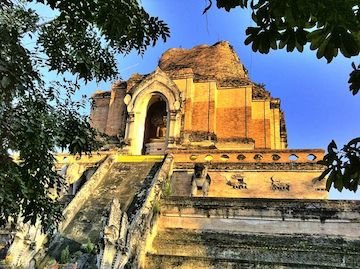
Point 46 — XI. 8. Of Impermanence
That impermanence is predetermined.
Some, like the Andhakas, hold impermanence itself is no less predetermined than impermanent things, such as the body, etc. By this, they are involved either in a plural order of impermanence or in an interminable series of temporal features, each predetermined in its way, with no prospect of coming to the end of predetermination.
The idea is that things possess impermanence as a characteristic feature. If this characteristic were predetermined, it should maintain another function of impermanence equally predetermined.
Point 47 — XIII. 7. Of Jhana as Enjoyment
That the expert enjoys Jhana, and the desire for Jhana has Jhana as its object. (note 1)
This opinion, held, for instance, by the Andhakas, is based upon the text: ‘He attaining to and abiding in First Jhana finds enjoyment in it.’
Note 1: Jhana-exercises, when rightly valued, are solely a means, not an end in itself.
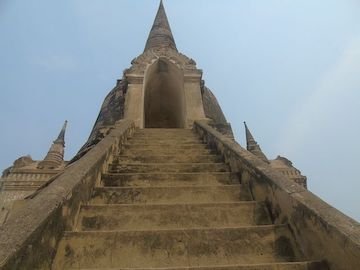
Point 48 — XIV. 5. Of Latent Bias as something Apart
That latent bias, in any of the seven forms, is different from a patent outbreak of the vice.
Some, like the Andhakas, hold this view, since an average worldly person, while his thoughts are ethically excellent or neutral, may be said to have a latent bias for the seven vices, but not to be openly manifesting them.
Point 49 — XIV. 6. Of Unconscious Outbursts of Corruption
That outbursts of corruption take place unconsciously.
The Andhakas, for instance, hold that lust and other wrong states may arise even in one who is attending to Impermanence, etc., and besides, it has been said: ‘Sometimes, Master Bharadvaja, when he is thinking: “I will attend to the not-beautiful” he attends to it as beautiful.’ (SN iv.111) Hence we are liable to involuntary outbursts of corruption.
Point 50 — XIV. 7. Of Desire as inherent in Heavenly Things
That desire for the things of the Rupa (form) heavens is inherent to and included therein.
Just as sensuous lusts are inherent in the world of sense-experience, and are said to be included in it, the lust for life in the Rupa (form) heavens and the Arupa (formless) heavens was held, by the Andhakas and the Sammitiyas, to be as stated.
Point 51 — XIV. 8. Of the Unmoral and the Unrevealed (Undeclared)
That error is unmoral.
As to the term avyakata, literally ‘undeclared,’ applied to the four categories: result-in-consciousness (vipaka), inoperative consciousness (kiriya), matter and Nibbana, it means ‘can not be declared to be either moral or unmoral, because of the absence of moral (or karmic) result-in-consciousness’ (avipakatta). Applied to a speculative opinion on unprovable matters, it means undeclared (akathitatta). Now some, like the Andhakas and Uttarapathakas, making no such distinction, speak of erroneous views as unmoral in their result (itself a wrong view).
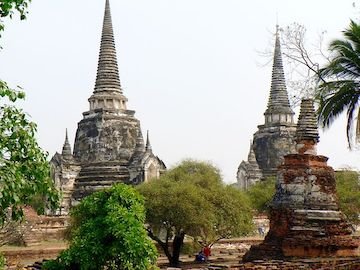
Point 52 — XV. 11. Of Karma and its Accumulation
That karma is one thing, its accumulation (upacaya: conservation) is another.
They who hold this view, for instance, the Andhakas and Sammitiyas, judge that the accumulating of karma goes on automatically, independently of moral action, or mental action.
Point 53 — XVI. 8. Of Matter as Result
That material qualities are results (of karma).
Some, like the Andhakas and Sammitiyas, hold that, just as consciousness and its concomitant attributes arise because of karma that has been wrought, so also do material (i.e., corporeal) qualities occur as results (of karma).
Point 54 — XVI. 9. Of Matter as belonging to the Material and Immaterial Heavens
That matter belongs to (i.) the material heavens, (ii.) the immaterial heavens.
Some, like the Andhakas, hold that since matter, which is the product of actions clone in the world (and heavens) of sense-desire, belongs therefore to that world, so if it be the product of acts done in the material or immaterial heavens, it belongs equally to those heavens.
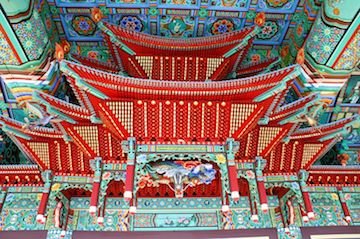
Point 55 — XVI. 10. Of Desire for Life in the Higher Heavens
That lust for life in Rupa (form) or Arupa (formless) spheres is included among the data thereof.
So think the Andhakas, and by the same analogy as they hold the previously stated opinion in point 50 concerning celestial desires in general. That is a view they share with the Sammitiyas, but this is theirs alone.
Point 56 — XVII. 1. Of an Arahant having Accumulating Merit
That there is accumulation of merit in the case of an Arahant.
This is an opinion carelessly formed by such as the Andhakas: that because an Arahant may be seen distributing gifts to the Order, saluting shrines, and so on, he is accumulating merit. For him who has put away both merit and demerit, if he were to work what is right, he would be able to work evil as well.
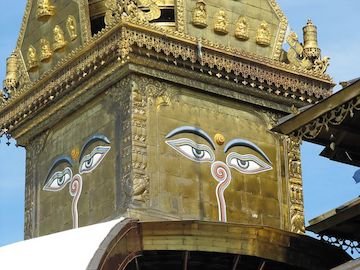
Point 57 — XVIII. 4. Of the Buddha and Fragrant Things
That (even) the excreta (excrement) of the Exalted Buddha excelled all other odorous things.
Out of an indiscriminate affection for the Buddha, certain of the Andhakas and Uttarapathakas hold this view.
Point 58 — XVIII. 5. Of a One and Only Path
That the fourfold fruition of the religious life is realized by one path only.
The same adherents from point 57, the Andhakas and Uttarapathakas, on the same grounds, hold that the Exalted One, in becoming a Stream-Winner, Once-Returner, Never-Returner, Arahant, realized all these four Fruits by one single Ariyan Path (and not in the four distinct stages each called a path).
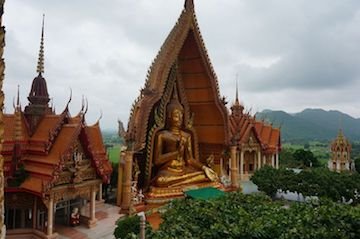
Point 59 — XVIII. 6. Of the Transitions from One Jhana to Another
That we pass from one Jhana to another (immediately).
Some, like the Mahimsasakas and certain of the Andhakas, hold that the formula of the Four Jhanas (in the teachings) warrants us in concluding that progress from one Jhana-stage to another is immediate without any accessory procedure.
Point 60 — XVIII. 7. Of Jhana and its Intervals
That there is an intermediate stage between the First and Second Stages (The words ‘First,’ etc., to ‘Fourth,’ in this discourse must be understood solely regarding the fourfold classification).
The Sammitiyas and certain other of the Andhakas hold the view that, in the Fivefold Jhana series, (when First Jhana is divided into two, according to as it is accompanied or unaccompanied by initial application of thought) the Exalted One did not intend to classify, but only to indicate, three forms (the first and second divide the First Jhana into two aspects, the third refers to the other three Jhanas) of concentration. But not knowing what form of concentration to be possible which is accompanied by sustained thought (savicara), and counting only initial application (vitakka), they hold that the former intervenes between First and Second Jhana, thus making up a later fivefold series.
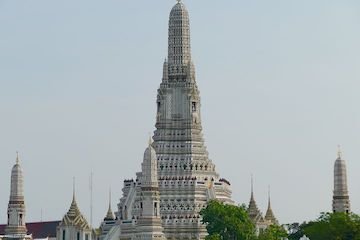
Point 61 — XIX. 2. Of the Void (sunnata: emptiness)
That ‘the Void’ is included in the aggregate of mental states (sankharakkhandha).
‘The Void (emptiness) has two implications: (a) Absence of self, which is the main feature of the five aggregates (mind and body); and (b) Nibbana itself. As to (a), some marks of ‘no-self’ may be included under mental states (the fourth aggregate) by a figure of speech. Nibbana is not included thereunder. But some, like the Andhakas, drawing no such distinction, hold the view stated above.
Point 62 — XIX. 6. Of Nibbana as Morally Good
That the element (or sphere) of Nibbana (nibbana-dhatu: considered in itself, independently coming to pass, ultimate, irreducible) is good.
All ‘good’ mental states are so called, either because they can, as faultless, ensure a desirable result-insentience (vipaka), or because they as faultless are free from the corruptions. The idea of faultlessness is applied to all except immoral states. The desirable result takes effect in a future rebirth, either at conception or later. The first term in the triad:—good, bad, indifferent—applies to the moral cause producing such a result. However, the Andhakas makes no such distinction, and call Nibbana ‘good’ just because it is a faultless state.
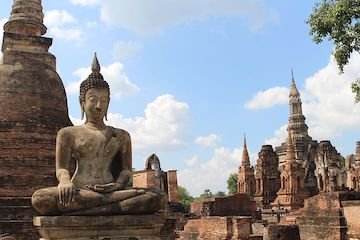
Point 63 — XX. 3. Of the Guards of Purgatory
That in the purgatories there are no guards.
Some—for instance, the Andhakas—hold that there are no such beings, but that the hell-doomed karmas in the shape of hell-keepers purge the sufferers.
Point 64 — XX. 4. Of Animals in Heaven
That animals may be reborn among the devas.
Among devas many—for instance, Eravana (the name of Indra’s elephant, sutta nipata verse 379)—assume animal shapes, such as those of elephants or horses, but no animals are reborn as such among them. Some, however, like the Andhakas, assume that because such celestial shapes have been seen, therefore these were celestially reborn animals.
Point 65 — XXI. 4. Of Supernormal Potency (iddhi)
That either a Buddha or his disciples have the power of supernormally performing what they intend.
‘Iddhi’ is only possible in certain directions. It is impossible by it to contravene such laws as that of Impermanence, etc. However, it is possible by iddhi to effect the transformation of one character into another in the continuity of anything, (santati) or to prolong it in its character. This power may be accomplished through merit or other causes, as when to feed monks, water was turned into butter, milk, etc., and as when illuminations were prolonged at the depositing of sacred relics. This description is our orthodox doctrine. However, some, like the Andhakas, hold that iddhi may always be wrought by will, judging by the venerable Pilindavaccha willing that the palace of the king is all of gold. (Vinaya Texts, ii. 65.)
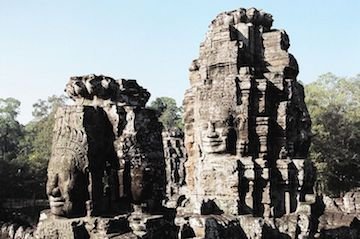
Point 66 — XXI. 5. Of Buddhas
That Buddhas differ one from another in grades.
We hold that, except for differences in body, age, and radiance, at any given time, Buddhas differ mutually in no other respect. Some, however, like the Andhakas, hold that they differ in other qualities in general.
Point 67 — XXI. 7. Of Phenomena (dhamma)
That all things are by nature immutable (niyata).
Some, like the Andhakas and certain of the Uttarapathakas, hold this, judging from the fact that nothing (however it may change) gives up its fundamental nature, matter, e.g., being fixed as matter, and so on.
Point 68 — XXI. 8. Of Karma
That all karmas are inflexible. (note 1)
The same parties also hold this opinion, judging by the fact that karmas which work out their effects under present conditions in this or the next life, or in a posterior series of experiences, are fixed with respect one to the other.
Note 1: There are two uniformities in Nature, by one of which the worst offenders are assured of immediate retribution after death, and by the other of which the Path-winner is assured of final salvation. Also, there is a third alternative group which is neither.
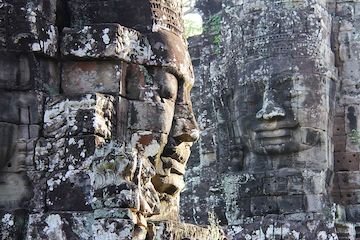
Point 69 — XXII. 1. Of the Completion of Life
That life may be completed without a certain Fetter-quantity having been cast off.
Since the Arahant completes existence without casting off every Fetter concerning the range of omniscience, some, like the Andhakas, hold the view as mentioned earlier.
Point 70 — XXII. 2. Of Moral Consciousness
That the Arahant is ethically conscious when completing existence at final death.
Some, like the Andhakas, hold this view on the ground that the Arahant is ever lucidly conscious, even at the hour of utterly passing away. The criticism points out that moral (ethical or right) consciousness inevitably involves meritorious karma (taking effect hereafter). The doctrine quoted by the opponent is inconclusive. It merely points to the Arahant’s lucidity and awareness while dying, to his ethically neutral and therefore inoperative presence of mind and reflection at the last moments of his cognitive process (javana). However, it was not intended to show the arising of morally right thoughts.
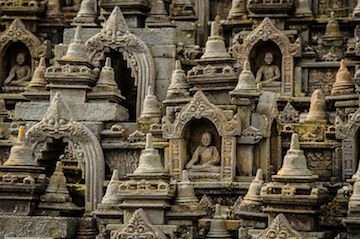
Point 71 — XXIII. 1. Of United Resolve
That sexual relations may be entered upon with a united resolve (ekadhippayo).
Such a vow may be undertaken, some think—for instance, the Andhakas and the Vetulyakas—by a human pair who feel mutual sympathy or compassion (not merely passion), and who are worshipping, it may be, at some Buddha-shrine, and aspire to be united throughout their future lives.
About the term ekadhippayo: There is nothing objectionable in the relation so entered upon, except, for a member of the Buddhist Sangha (a monk).
Point 72 — XXIII. 3. Of Self-governed Destiny
That a Bodhisat (or future Buddha) (a), goes to an evil doom, (b) enters a womb, (c) performs hard tasks, (d) works penance under alien teachers of his own accord and free will.
Some—for instance, the Andhakas—judge that the Bodhisatta, in the case of the Six-toothed Elephant Jataka (Jataka birth-story No. 514) and others, was freely so reborn as an animal or in purgatory, that he voluntarily performed difficult tasks, and worked penance under alien teachers.
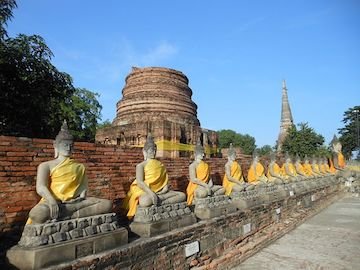
Point 73 — XXIII. 4. Of Counterfeit States of Consciousness
That there is that which is not (a) lust, (b) hate, (c) dulness, (d) the corruptions, but which counterfeits each of them.
Such are with regard to (a) amity, pity, approbation; with respect to (b) envy, selfishness, worry; with respect to (c) the sense of the ludicrous; with regard to (d) the suppressing of the discontented, the helping of kindly monks, the blaming of the bad, the praising of the good, the declaration of the venerable Pilinda-Vaccha about outcasts, (Udana iii.6) the statements of the Exalted Ones about the incompetent or irredeemable. Such is the opinion held, for instance, by the Andhakas.
The next article will be the The Katha-vatthu — Chapter 4 — Part 12.

- Introduction to the history of Buddhist Councils and Schools-Part 1
- The Buddhist Councils — Who, when, where, and why?Part 2
- The Buddhist Councils — Who, when, where, and why?Part 3
- The History Of ‘Northern Buddhists’ of Sarvastivada - Part 4
- The History Of ‘Northern Buddhists’ of Sarvastivada - Part 5
- Buddhist schools at the time of the First ‘Maha-Kasyapa’ Council at Rajagaha. - Part 6
- Buddhist schools at the time of the First ‘Maha-Kasyapa’ Council at Rajagaha. - Part 7
- Buddhist schools at the time of the Third ‘Moggaliputta Tissa’ ‘Asoka’ Council - Part 8
- Buddhist schools at the time of the Fourth ‘Vasumitra’ ‘Kanishka’ Council at Jalandhar. - Part 9
- Buddhist schools in the 5th Century A.D. according to the Chinese pilgrim Fa-hsien-Part 10
- Buddhist schools in the 7th Century A.D. according to the Chinese pilgrim Yuan-Chuang-Part 11
- How the Theravada school dealt with doctrinal points from other schools-Part 12-The Katha-vatthu — Chapter 2
- How the Theravada school dealt with doctrinal points from other schools The Katha-vatthu — Chapter 3 — Part 12 "Continued"
- The Ten Stages of the Mahayana Bodhisattva Path-The Two Preliminary Stages-Part 1
- The Ten Stages of the Mahayana Bodhisattva Path-The Two Preliminary Stages-Part 2
- The Ten Stages of the Mahayana Bodhisattva Path-The Two Preliminary Stages-Part 3
- The Ten Stages of the Mahayana Bodhisattva Path-The Two Preliminary Stages-Part 4
- The Ten Stages of the Mahayana Bodhisattva Path-The Two Preliminary Stages-Part 5
- The Ten Stages of the Mahayana Bodhisattva Path-The Two Preliminary Stages-Part 6
- The Ten Stages of the Mahayana Bodhisattva Path-The Two Preliminary Stages-Part 7
- The Ten Stages of the Mahayana Bodhisattva Path-The Two Preliminary Stages-Part 8
- The Ten Stages of the Mahayana Bodhisattva Path-The Two Preliminary Stages-Part 9
- The Ten Stages of the Mahayana Bodhisattva Path-The Two Preliminary Stages-Part 10
- The Ten Stages of the Mahayana Bodhisattva Path-The Two Preliminary Stages-Part 11
- The Deathless In Buddhism
- The "Timeless" Teaching-Being Beyond Temporality
- The Nine Successive Cessations In buddhist Meditations - Part 1
- The Nine Successive Cessations In buddhist Meditations - Part 2
- The Nine Successive Cessations In buddhist Meditations - Part 3
- The Twelve Links Of Dependent Origination
- THINGS to DEVELOP and THINGS to AVOID
- The First Noble Truth
- The Second Noble Truth
- The Third Noble Truth
- The Fourth Noble Truth
- 10 Fold Path Series
- EATING MEAT — WHY THE BUDDHA WAS NOT A VEGETARIAN
I will flag comment spam at 1% strength. If you keep on spamming my post, I will flag you at 100%. I don't care if you have limited English abilities, write a couple of sentences about this article, no copy-paste, please. I will flag: one sentence comments, links to your blog and begging for up-votes and follows. Also, I will flag comments that have nothing to do with my blog's article. I will also check your comment section to see if you have been comment spamming on other blogs.
I have not participated in your posts several times, so I have a little trouble understanding all of your explanations, but I just want to see a little comparison in Islam, that in Islam there are also many schools of belief, they then set up their respective schools to continue their beliefs , even though during the prophet Muhammmad and the companions of Abu Bakr and Saidina Umar bin Khattab there was only one belief stream.
Most of us can glean helpful information about how Buddhist explored our shared reality and experience as a human being and fashioned healthy relationships between self and other.
Dear @steemitnatural, to understand these posts one has to be well versed in studies of the seven books of the Abhidhamma Pitaka, the third division of the Tipitaka, offer an extraordinarily detailed analysis of the fundamental natural principles that governmental and physical processes.
Our articles are related Abhidhamma/Abhidharma text, and the post my husband and I are writing are arguments and disagreements between the early schools that have formed the Theravada, Mahayana (Avatamsaka, Zen, Pure Land, T'ien T'ai, Madhyamika, Yogacara, Ch'an, etc.) and Vajrayana traditions we have today.
If one thinks, speaks or acts with an evil mind, misery follows him just as the wheel follows the hoofs of the ox that draws the cart. If one thinks, speaks or acts with a pure mind, happiness follows him like his shadow that never leaves him—Dhammapada, Verses 1&2
MENTAL SCIENCE OR ULTIMATE SCIENCEThere may not be any connection to other religions except for a strong foundation with morality and virtuous behavior that brings peace to the individual and community.
Point 71 So a person could have sexual relations out of compassion or sympathy rather than passionate love? Thanks @reddust
Yes @enjoywithtroy, most long-term relationships are like that. We start out with passion and as our relationship matures so does our sexual relationship, many times the heat dissipates but love grows like a beautiful garden, no matter what our religion or belief system.
However, sexual relationships in Buddhism are tied to cultural views as well so depending on the society sexual conduct per Buddhist view may be different from one community to the next. Sexual misconduct is strongly tied to karma in all Buddhist schools Sila-Conduct...Finally, respect for personal relationships means to avoid adultery, to avoid sexual misconduct. You can see how, if these guidelines are sincerely cultivated within a society, such a society will be a better place to live in.. Monastics cut away and leave behind all habits including sexual habits. Practice is likened to pouring cold water on hot coals...hahaha lots of steam in the beginning and eventual all the heat is gone. If one is a layperson in a relationship and a partner still feels the need to have sex the other partner out of compassion will give sex without harming their partner or falling into unconscious habit patterns that fuel negativity.
@reddust, Glad to see you again with actively come back steemit through part no. 8 of Buddha teachings. The Kathavatthu had so many contents. But I read carefully all ones spent time. But these blog has most important things I saw. Every one need to find Nibbana way. If not we can again re born to the world after our death. But cannot sure we'll born again like human spirit. Our mind need to keep good states. Another way Karma definitely give result in future. It can be just now. It name called Dittadhammawedaniya karma. Yep..I agree..Karma is one thing. Those all contents has big meanings and it definitely give result like good or bad for our worth of work (PIN). In fact Karma must believe and try collect best things to your worth life. Finally we seek our destiny.
@madhushanka, I don't know what will happen to me when I die, this skin bag full of habits, blood, and bone, however I do know that what I do right now will be like a seed that will eventually sprout, maybe in the next minute, or the next day, next year or next lifetime. So I try and be aware of my actions and plant seeds that will grow sweet fruit. This is my practice as a layperson and one of the most difficult and subtle behaviors I am trying to develop to stay aware of my intentions and actions.
My husband and I have had so much fun trying to figure out how to present this information. My study and practice at retreats have helped direct how my husband collects data. He has put all this information in excel files from dozens of old books and journals that are now out of print. We have learned so much from this project, and both of us are happy people are enjoying what we love to study.
Point 57 is quite interesting. Although it is presented in an almost funny way, it shows the problem of cult of personality. Some people lose touch and do not see negatives in what they chose to venerate.
Oh man, the cult of personality rules our politics and just about everything else right now @marcusantoniu. What happened to judge a person per their character? Only a fully evolved Buddha can see someone else's karma, and if anyone else says they can see someone's karma, they are full of shit. Since we are not Buddhas if someone says they are a full-fledged Buddha we can only judge what they claim to be true by how they behave. What a paradox...hehehe
Many of these schools developed in far-flung communities that had minimal contact. So when a different Buddhist community came in contact, the suttas remembered by Buddha's cousin Ananda were the same but the commentary, how the different schools viewed the teachings may be vastly different and hence the arguments.
then in Islam there is also what is called the tariqat expert, which is a method of charity in the rules made by a Tariqat imam, the Tariqat in Islam is very numerous, there is Naqshabandiyah, which is a method of charity compiled by Sheikh Bahauddin an Naqshabandi, there is Syatariah, there Haddad, there is syaziliah, and many more ...
the most among us is the naqshabandiyah tariqat,
I'm glad you have reactivated my friend,
I will look these terms up @steemitcountry, how we conduct ourselves is essential not only to our own physical and mental health but essential for the health of our community as well.
@deisydavi, even though I took a break from social media and the net my husband and I didn't stop our research. Thank you for stopping by<3
i love your blog...Thank you so much for explaining the history
awesome historical story
love to read it
Your article is very exciting!
Very good posts, hopefully you can always be successful in the esteem business